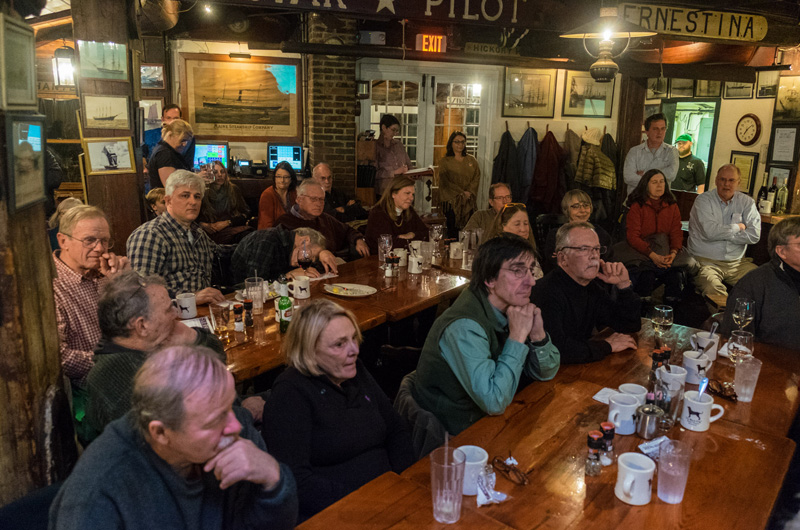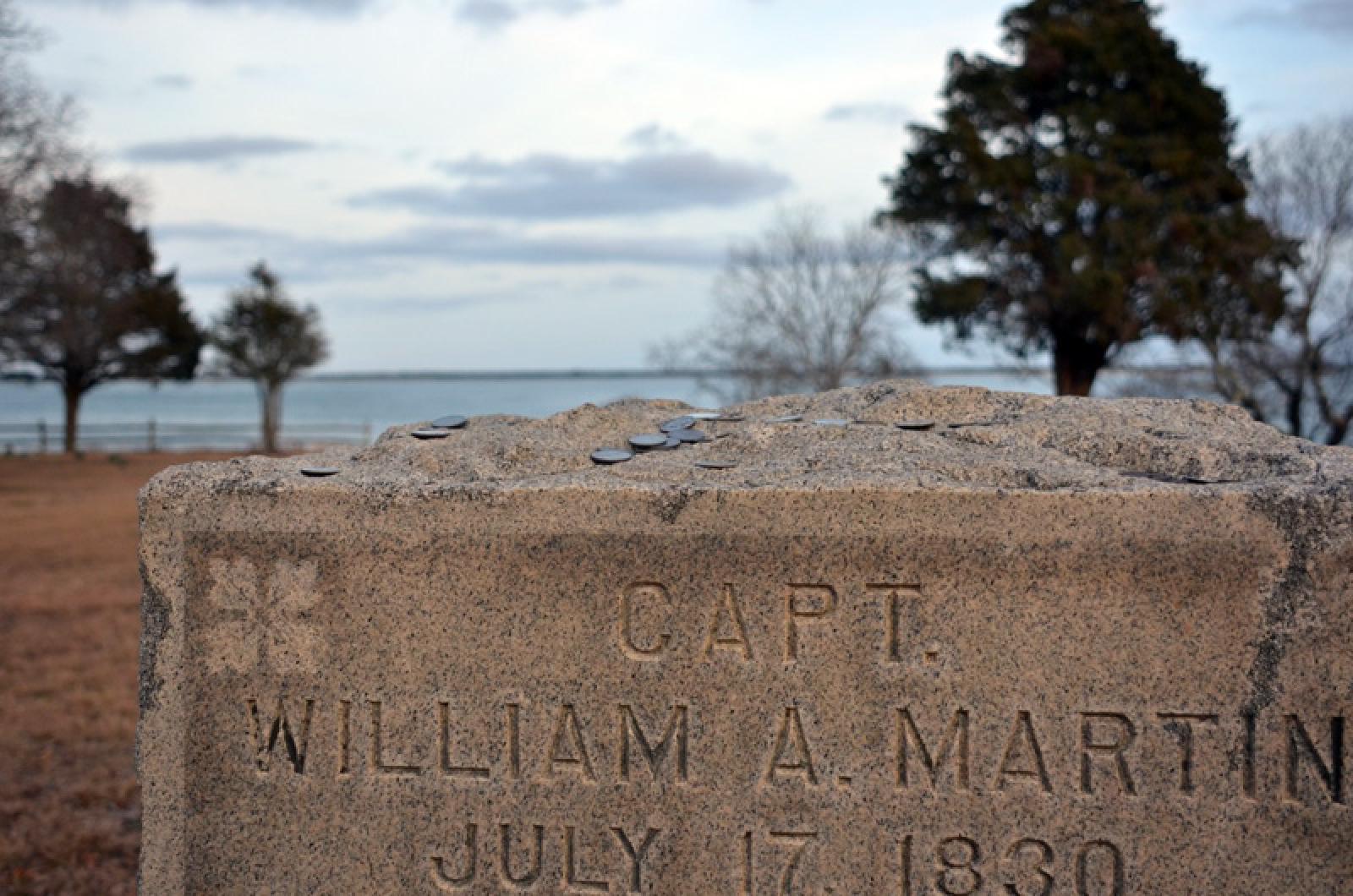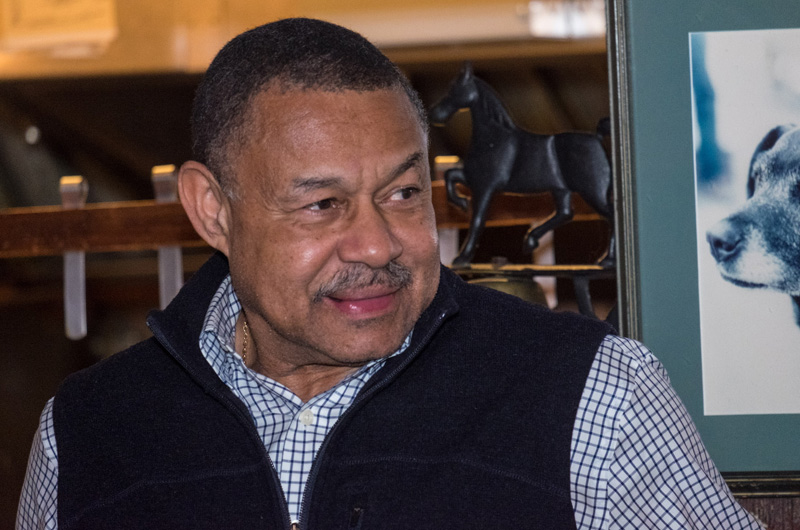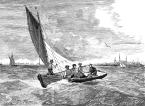Over nearly three centuries of whaling, some 175,000 men went to sea in 2,700 ships. Of the 2,500 masters who captained these ships, at least 63 were men of color, five of whom are known to have Martha’s Vineyard ties.
“At least three are probably buried here,” Skip Finley told a rapt audience of 75 during Wednesday night’s Sail MV event at the Black Dog Tavern in Vineyard Haven. Mr. Finley’s talk, titled Black Whaling Captains: Masters of the Sea, brought to life his three years of research into this little-known aspect of whaling history.
The original oil industry — at its peak, the fifth largest business in the United States — whaling offered rich opportunities to all men, regardless of skin color. Based on ships’ records, “30 to 40 per cent of everyone who ever went whaling were black,” Mr. Finley said. At sea, a black master could slap or flog a white sailor. On land, he couldn’t look a white man in the eye.
But the path to the quarterdeck was hard and hazardous. One whaling voyage was enough for most men, Mr. Finley said, naming some of the reasons: “Mad captains. Boredom. The British. Mutiny. No sex. Pirates. Poor clothing. Whales that fought back. Discrimination.” It was also one of the most dangerous occupations in the world, second only to mining.
Yet while 90 per cent of whaling crewmembers dropped out after one trip, black sailors — particularly during slavery — were more likely to return, Mr. Finley said. “Not just to make money, but to avoid being enslaved.” Aboard ship, they were treated like other men.
The whalers of color who persevered to become captains have fascinated Mr. Finley for years. In May, 2014, he published his first article on the subject, Not Your Average Ahab, in Martha’s Vineyard Magazine. It profiled William A. Martin, the great-grandson of a slave brought from Guinea to Chilmark in the eighteenth century.
Born on the Vineyard and buried on Chappaquiddick, where his home still stands, Captain Martin spent four decades in the whaling industry before retiring after an injury in 1887. At the time of Mr. Finley’s article, he was one of 30 known black whaling captains. Since 2014, Mr. Finley’s research has turned up 33 more, and he recently completed the manuscript of a book on the subject.
Most black whaling captains were of mixed heritage. The “one drop” doctrine, also known as hypodescence, meant that any trace of nonwhite blood was enough to define one’s race. The many shades of sailors’ skins, listed in ship records, included black, brown, “dark,” “yellow” and “copper.”
“Men with tans,” Mr. Finley said.

Wampanoags and Cape Verdeans were among the most skilled whalers. “The Wampanoags invented whaling as we know it,” by seeking the cetaceans at sea instead of waiting for them to wash up ashore, Mr. Finley told his audience.
John Teofilo Gonsalves, a Cape Verdean, was the last master of the Charles W. Morgan and also captained the Eunice H. Adams — Captain Martin’s former ship — out of Edgartown in 1893. During his career, Captain Gonsalves killed more than 140 whales, brought back $1.6 million worth of oil and had an encounter with a German submarine. “He was a bad shut-your-mouth,” Mr. Finley quipped.
An earlier whaling captain of color was Paul Cuffe, whose first voyage took place in 1778 — the year Massachusetts granted voting rights to all men except those who were “Negro, Indian or mulatto,” Mr. Finley said. Captain Cuffe happened to be all three, but on the deck of a ship his word was law.
Of the 63 known black whaling captains, Mr. Finley said he’s convinced at least a dozen were former slaves, but he doesn’t know how they made their way to command. And while Captain Martin’s home is still standing on Chappaquiddick, none of the stately captains’ homes of Edgartown were built for masters of color, Mr. Finley said.








Comments (24)
Comments
Comment policy »